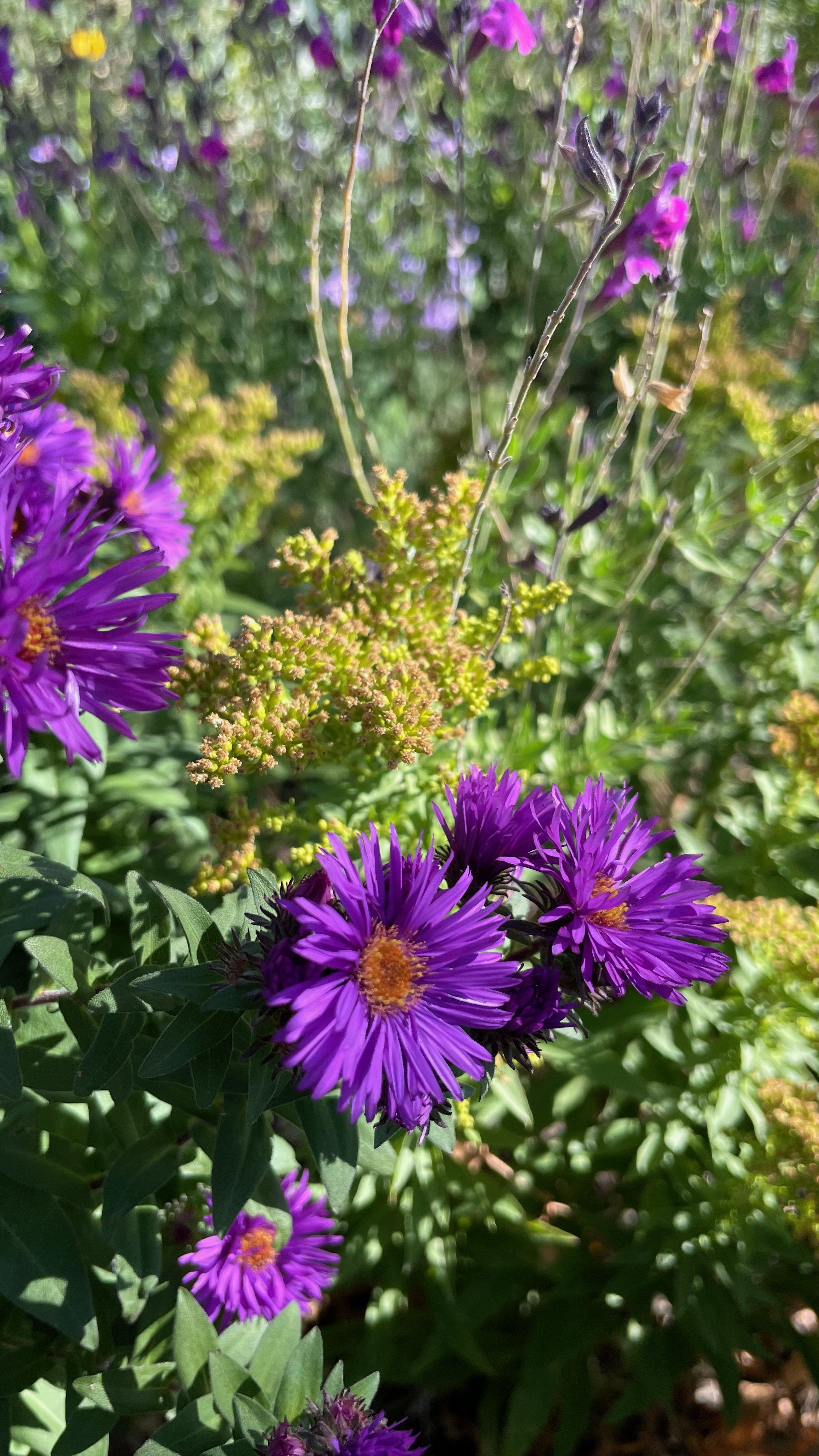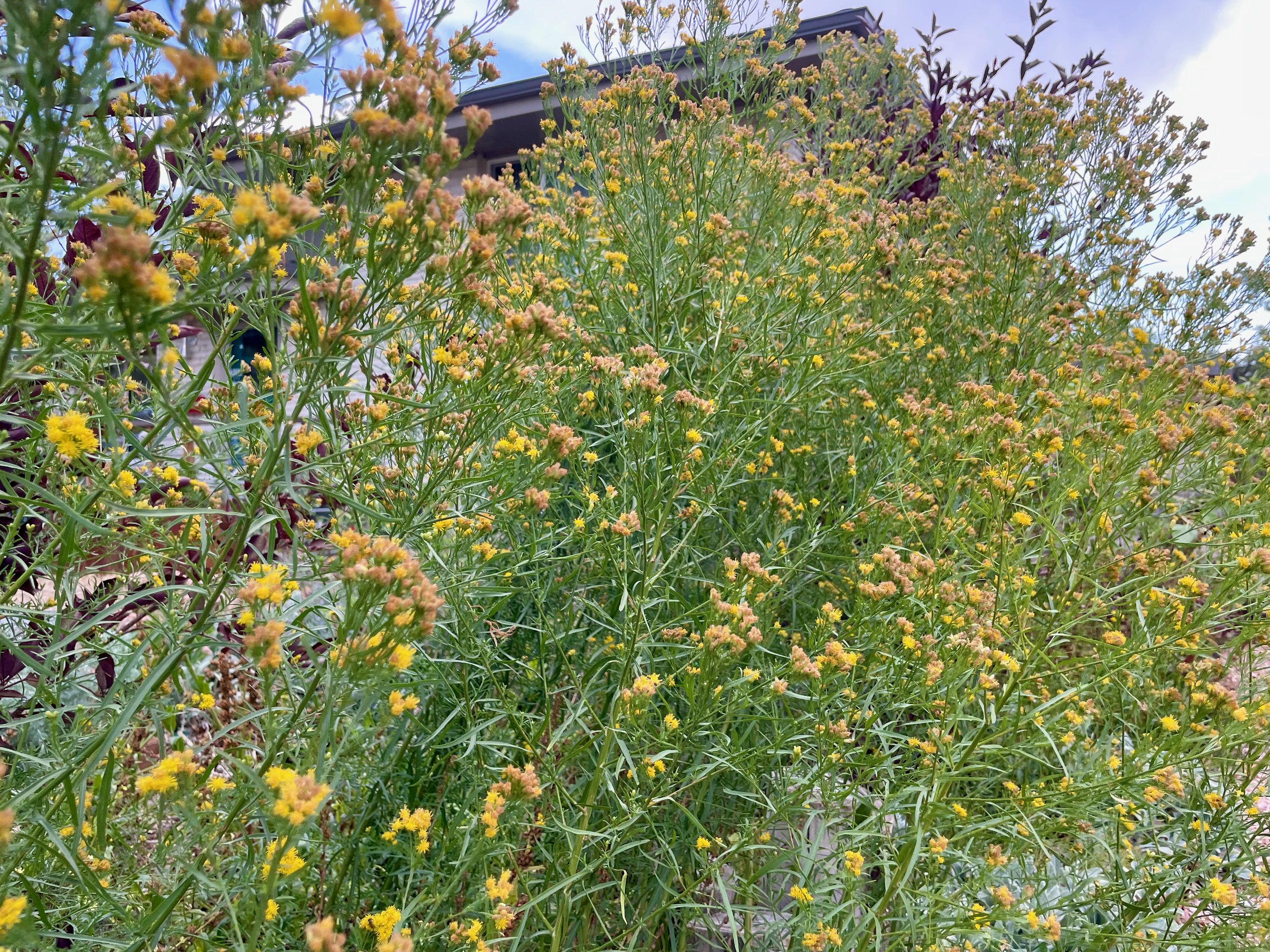Plant This!
Solidago
a feast for butterflies, birds, and bees
No matter what your grandparents may have told you, you are NOT allergic to this plant. But more on that in a minute. This is Solidago, commonly known as Goldenrod. And it is a keystone species in North America – meaning it is a critical species for the lifecycle of many of our native pollinators including native bees, pollinating flies, and is a rich food source for butterflies.
There are more than 120 species and many cultivars of Solidago – most of which are native to North America. The species bloom in late summer – July through October – providing a critical nutrients and calorically-rich pollen for migrating butterflies and native bees preparing for hibernation. According to entomologist Doug Tallamy of the University of Delaware, Solidago is “one of the best herbaceous native perennials for attracting and feeding wildlife” (Source: National Wildlife Federation).
According to Tallamy’s research, Solidago species:
feed and shelter hundreds of butterfly and moth species
provide nutrient-rich nectar for Monarch Butterflies before their annual migrations
are the exclusive food source for dozens of native bee populations
act as living birdfeeders for songbirds who eat their seed over the winter.
Solidago multiradiata
Most Solidago varieties thrive in full sun. Some are drought-tolerant. Some like Solidago missouriensis have extremely deep root systems. And many are extremely flexible and will thrive almost anywhere in almost any type of soil. The key in choosing a Solidago is to choose a variety – or several – that are native to your area.
So, how do you know what to look for? I like using Wildflower.org's website for this kind of search.
Type in Solidago – you'll get 146 hits.
Then choose your state to narrow it down.
You can go even farther to narrow your search by growing conditions.
I have several varieties of Solidago in my garden including:
Solidago multiradiata with Symphyotrichum novae-angliae 'Purple Dome' (Purple Dome New England Aster)
Solidago multiradiata also known as Rocky Mountain Goldenrod planted here with Symphyotrichum novae-angliae 'Purple Dome' (Purple Dome New England Aster). In my garden, Rocky Mountain Goldenrod is a shorter variety (under 24” tall) with gorgeous color and so many blooms. I love the yellow with those late fall purple asters.
Solidago canadensis
And Solidago canadensis which is very tall — nearly 6 feet tall in my garden — and full. This plant catches the snow beautifully in the winter, and begins growing quickly in the spring which is a bonus. I have it planted on the edge of the Wildlife Garden along with some smaller trees and shrubs. It forms a lovely thicket for wildlife, but also has become a bit of a wild hedgerow.
Both are just covered in blooms for months on end as well as bees and all kinds of insect life, too. They lend beautiful late-summer and fall color to the landscape, and their foliage — both differently shaped and textured — are lovely on their own.
Some gardeners report that certain Solidagos don't stay put – they send out runners and pop up all over the garden. I have not found this to be true with the varieties I have planted currently.
All of my Solidago plants, right now, are in the Wildlife Garden, but I am planning to put some into some back beds this year, too. I have a RULE OF THREE in my garden: with most plants, I try to put a minimum of three of each plant in close proximity. That's partly a design idea – it makes a bigger visual impact. But it's also an abundance factor – if it is a plant that a pollinator or insect loves, I want there to be plenty for them to enjoy.

Here’s a peek at how two species of Solidago look in the context of the Wildlife Garden in late summer:
So how is it that you are NOT allergic to Solidago?
The grains of pollen from Solidago plants are large and sticky and NOT airborne; these plants are pollinated by insects. The pollen doesn't blow around in the wind. And THIS is why you are NOT likely to be allergic to Goldenrod. However, it often grows together with Ragweed in the wild. Ragweed pollen is airborne and one plant can produce a BILLION grains of pollen in a season. Ragweed is the billionaire villain. Not Goldenrod.
So that's our plant of the week: Solidago! If you are a North American gardener, find a variety that is native for you. Your native insects will thank you for it.
Happy Gardening!
Angela





